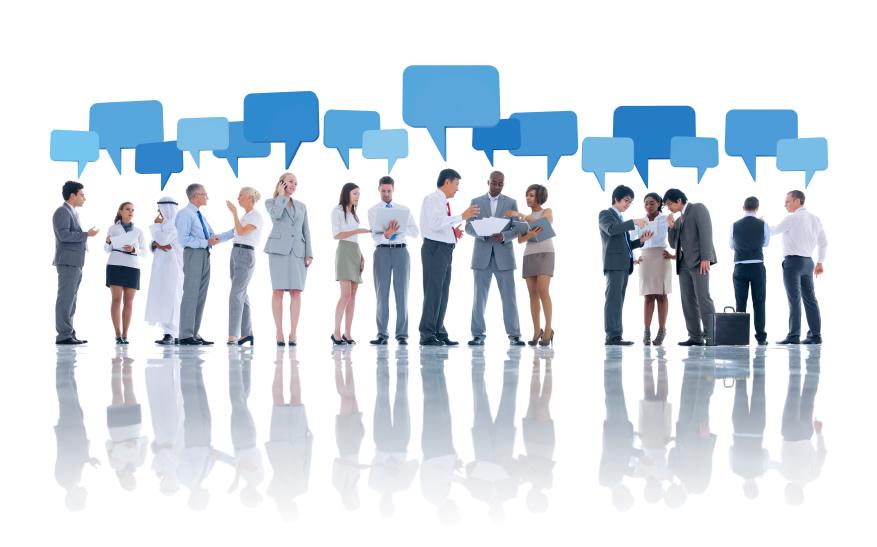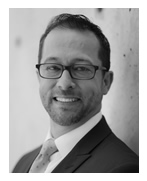Core Programs
You can consistently expect a program that is edutaining (educational and entertaining) and relevant. Phillip is a just as skilled and innovative as an instructional designer as he is as a facilitator. All programs are highly interactive and leverage the latest in adult learning and accelerated learning. He will leverage a consultative approach to partner with you to ensure the programs align to support your strategic goals and get you solid results that maximize the ROI of your training investment.
Teleworking StrategiesPhillip will help you strategize and implement great practices for working from home … |
Managing TeleworkersPhillip will help you build your skills for managing telecommuting employees … |
Epic Teleworking
The Elevated Teleworker: Productive Telecommuting Made Simple
Delivery Mode: Virtual Interactive Webinar (Two 90-120 minute segments)
Program Focus:
Delivery of this foundational telework curriculum will be catered to specific team and individual needs. It is highly interactive and fun. This competency-based learning program is instructionally sound and the delivery will utilize relevant examples to support any organizational strategies and specific needs to ensure the program is relevant. Interviews were conducted with teleworkers and senior leaders from small and large organizations from a variety of industries. This laser-focused program will help with retention and application of the concepts on the job.
This remote webinar will:
- Demystify teleworking and explore the value.
- Recommend strategies for keeping in touch, engaged and visible.
- Introduce evidence-based and reliable best practices.
- Create a unique Individual Telework Action Plan (iTAP) based on workstyle preferences.
Competencies Emphasized:
Tips introduced and activities experienced during the session will support the following essential telework competencies: Communication, collaboration, trustworthy, relationship-building, self-directed, problem-solving, discipline, initiative, agility, flexibility, empathetic, resourceful, motivation.
Program Summary:
Remote working is no longer a generationally driven need. It is a differentiation and strategic competitive advantage companies leverage today to actually elevate performance and employee engagement. Epic people are memorable and standout. They leave a mark.
Epic teleworkers in the modern workplace are able to keep relevant, accessible, anticipate the needs of stakeholders and build trusting relationships. Epic teleworkers have standards. This interactive webinar provides participants a simplified approach to telecommuting resulting in actionable steps they can take following the course.
Participants will learn a bit about themselves and working preferences. Then they will learn proven options for effective teleworking. Finally, they will design their teleworking strategy that supports their role effectiveness, personal remote environment and unique work style.
Best practices introduced will elevate productivity and provide confidence and clear direction. Strategies introduced include establishing an effective remote telework environment, creating a focused mindset, outlining an individualized routine, practicing self-accountability, building trust, nurturing stakeholder relationships and maximizing productivity.
Program Objectives:
Participants will be able to:
- Gain confidence from reliable evidence showing the value and ROI for teleworking.
- Plan for the potential stress associated with working alone.
- Understand their unique workstyle preferences.
- Shift from an office to a remote office environment.
- Anticipate and control environmental and mental distractions.
- Implement mental reminders to develop productive habits.
- Establish supportive and deliberately laid out routine.
- Prepare for remote meetings and other remote interactions.
- Practice a globalized approach with respect to culture and time zone differences.
- Make deep connections that count with people to build trust.
- Design a documented, unique and individualized telework approach.
Program Flow:
The program incorporates accelerated learning techniques with a competency-focused approach. The program uses humor and multiple activities to take the participant in a journey specific to their unique needs. The emphasis on these modules encourage systematic self-confidence and trust building.

Outline
- Telework Faux, Fad or Real: The ROI
- Discover Workstyle Preferences and Needs
- Identify Prioritizing and Accountability Structures
- Recognize Tools for Remote Team and Project Collaboration
- Introduce Top Proven Epic Telework Tips
- Design Individual Telework Action Plan (iTAP)
Ultimately participants will create a custom and holistic telework strategy and standards, their Individual Telework Action Plan (iTAP). This will support their workstyle, align with the organizational culture and maximize productivity.
Refer also to: The leadership and supervisory program, Managing Teleworkers.
#Telework, #teleworking, #productivity, #ModernWorkplace, #TeleCommuting, #VirtualTeams, #RemoteOffice, #Teambuilding, #WorkLifeBalance, #TrustBuilding, #Trust, #ManagingTeleworkers, #Teleworkingforemployees, #workstyles, #teleworkstrategy, #teleworker, #VirtualWork, #iTAP, #IndividualTeleworkActionPlan, #competencybased, #virtualworker, #homebase, #homeoffice, #epic, #epictelework, #epicpeople, #epicstandards, #elevateperformance, #holisticteleworkstrategy, #workstyle, #individualteleworkactionplanitap, #aceleratedlearning, #competencyfocused, #mentaldistractions, #environmentaldistractions, #routine, #remotemeetings, #remoteinteractions, #workstylepreferences, #stress, #teleworkROI, #telecommutingROI
Managing Teleworkers
The Long-Distance Manager: Skills for Leading Decentralized and Telecommuting Employees
Available Format: Remote Interactive Webinar
Course Outcomes:
This teleworking management course will:
- Discuss the benefits and challenges associated with managing remote teams.
- Share best practices for creating a unique and comprehensive telework plan.
- Introduce a competency-based approach that creates autonomy and accountability.
- Build participants’ confidence to manage a routine and lead through crises.
This leadership teleworking curriculum is highly interactive and will be catered to your specific needs. The delivery will use relevant examples to support any internal teleworking initiatives and specific needs you have to ensure the program is relevant. This will support participant retention and application of concepts on the job.
Course Overview
This webinar is designed to help managers set themselves up to successfully lead and navigate the teleworking landscape.
Does telework matter? You bet. Teleworking is an increasingly integral part of the modern workplace. And studies show that when it’s not mandatory, people often prefer the option of teleworking to a pay raise.
This program prepares those in supervisory positions to manage telecommuters, teleworkers, and others who do not regularly work in a centralized location.
Strategies covered in this session include self-readiness, competency-based management approaches, managing fear, trust-building approaches for getting support, supporting personal work styles, contingency planning, and more.
Program Objectives
At this program’s conclusion, participants should be able to:
- Identify the trends, risks, and benefits of teleworking in the modern workplace.
- Elevate employee engagement and retention with a strategic telework plan for success.
- Create a cohesive telework strategy that supports individual work styles and builds trust.
- Increase employee performance without micromanaging.
- Self-assess personal buy-in and readiness to manage a teleworking team.
- Outline the competencies required for an effective teleworker.
- Ensure setting teleworkers up for change and lasting success.
- Build a cohesive and collaborative teleworking team culture.
- Set teleworking home base standards for consistent and predictable performance.
- Determine a communication plan that provides stakeholder support using RACI.
- Establish and communicate a system of accountability and recognition.
- Manage a telework team during a crisis.
Program Modules
- Trends, Risks, and Benefits
- Competencies and Habits
- A Collaborative Team Environment
- Setup a Remote Space for Success
- Focused Communication
- System of Accountability
Upon the conclusion of this comprehensive and interactive web-based management course, participants should have clear options and inspired confidence to plan and lead a sustained, strategic telework approach that will elevate engagement and improve performance.
Cultural Intelligence (CI)Phillip is a certified CQ instructor by the Cultural Intelligence Center. He provided insights to the … |
Emotional Intelligence (EI)Phillip has designed and led emotional intelligence programs to a variety of audiences including the … |
Change ManagementPhillip helped outline the Managing Organizational Change body of knowledge for … |
Cultural Intelligence (CI)

Results: Creativity and innovation, reduce stereotyping, increased service and sales, improved negotiation, trust building, enhanced sensitivity to cultural adjustments, effective in culturally diverse situations.
Phillip is a certified CQ instructor by the Cultural Intelligence Center. He provided insights to the Association for Talent Development (ATD) to include these concepts as a standard for the workplace learning and performance profession. He has also introduced these concepts into his diversity awareness programs being used by organizations that include the Easter Seals, Awareness in a Box, etc.
Some of the CQ training Phillip delivers was designed with David Livermore, PhD, who leads the Cultural Intelligence Center and is known as the thought leader on the subject. It was designed to enhance self-awareness and global leadership capabilities of participants. The assessment programs and workshops can be customized to fit specific audiences, including corporate, government, classroom, study abroad programs, faith-based contexts, or youth.
Emotional Intelligence (EI)
Results: Greater sales and productivity, stable staff, employee engagement, risk management, increased customer service experience as a result of greater self and social awareness, emotional management, effective communication, conflict resolution.
Phillip has designed and led emotional intelligence programs to a variety of audiences including the US Department of Labor Job Corps to provide cutting-edge foundational education to help young people learn a career and find and keep a good job.
Phillip has written a blog post on the use of EQ and comparing it to DISC and MBTI. EQ provided the greatest opportunity for a deliberate and effective growth plan for leaders. Behavior and personality may shift single digits at best—EQ, double digits.
Leading others is a people-centric set of skills. EQ helps leaders know themselves and use their own strengths — and work with and through people effectively. Emotional intelligence (EI) is the ability to recognize one’s own and other people’s emotions, to discriminate between different feelings and label them appropriately, and to use emotional information to guide thinking and behavior.
Change Management
Results: Anticipate needs prior to implementation, respond faster to customer demands, manage costs of change, increase ROI from change, lower risks associated with change, improve individual morale, improve collaboration and cooperation, increase buy-in and acceptance, innovative approaches, create a culture of constant and newer-ending improvement.
Phillip helped outline the Managing Organizational Change body of knowledge for the talent development and workplace performance credential, the Certified Professional in Learning and Performance (CPLP). He delivered change management programs for companies in a variety of industries, including the US Air Force, Mercedes-Benz, Kia, Avis and Elevance.
The modern workplace is in a state of constant evolution, innovating and changing to remain competitive and relevant is essential. Today, leaders are depending on their people to accept and support changes in leadership, technologies, policies or management approaches essential to sustainable success. The reality is, most employees initially resist workplace changes and defend the status quo. Change is an emotional experience. We have to grieve the loss. Some are able to simply do so faster than others.
Phillip’s emphasis in his change management programs is to make it easy and convenient for your organization to avoid resistance and minimize the emotional responses that can increase the speed of change within your organization.
Customer and Guest ExperiencePhillip is on the forefront of understanding today’s modern, sophisticated consumer. He has … |
DiversityThe purpose of the training is to create a shift in the attitudes, beliefs, and behaviors of the as … |
Problem-Solving, Decision Making and Planning StrategicallyPhillip has done extensive research in this field. It is one of his passions. He has delivered … |
Customer and Guest Experience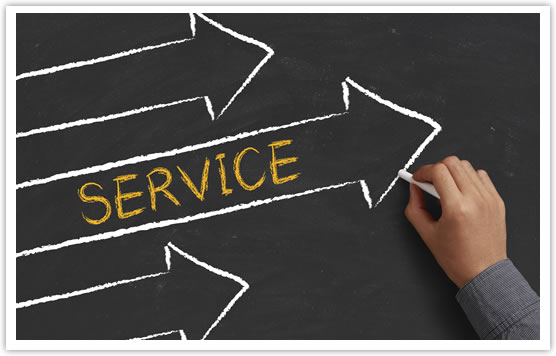
Results: Improved customer retention, increased sales, improved employee engagement, greater customer satisfaction, improved interpersonal skills, from learning to create raving fans, understanding the psychology of creating a deliberate experience, establishing an orientation of respect, improved telephone etiquette, understand today’s modern customer tendencies and generational differences.
Phillip is on the forefront of understanding today’s modern, sophisticated consumer. He has delivered programs to organizations seeking to shift their culture and approach to building relationships and creating fanatics. His approaches are delivered in a way that is your particular needs and field. Join Phillip as he shares his passion for the psychology of the modern customer experience.
He has engaged with companies such as Mercedes-Benz, Gucci, Ritz Carlton, BMW, Toyota, Windsor Communities, Welk Resort Group, Merisel, Maserati, Avis, Budget, among others. Phillip is experienced at shifting the thinking of audiences with facts that raise awareness and strategies to help people think out-of-the-box. He will help you consider the desired outcomes, with an emphasis on feelings and memories you want to create. This way you can become more deliberate and relevant.
His fun and energetic approaches help participants take a fresh perspective as to how they see their customers and guests. He introduces concepts to help provide personalized service experience for your guests. Phillip will help you learn more about how the customer’s brain works so you can be more deliberate. Whether you are a call center, retail store or resort, the rules are the same. They have changed.
Expect Phillip to take you out of your comfort zone. Occasionally, he may even set up a field trip to tour a business locally known for their outstanding customer experience. He will help you understand the opportunities in your customer’s journey to create a deliberate and memorable experience they will want to go out and share.
Diversity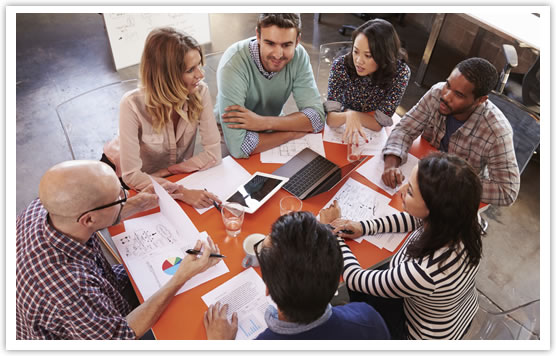
Results: Build greater trust, productivity and retention. Understand the uniqueness in today’s modern workplace, learn impacts of diversity on employee engagement, understand and prioritize company needs. Increased innovation and team effectiveness will result in increased productivity.
Awareness in a Box
The purpose of the training is to create a shift in the attitudes, beliefs, and behaviors of the participants as they encounter people that are different from themselves in both their business and personal lives resulting is social inclusion.
The training teaches concepts of empathy, social inclusion, and appreciation of diversity, disability, empathy vs. sympathy, assimilation, and acculturation. Additionally, while the original intention was to train the typical population to understand and ultimately include people with autism and disabilities, the training has evolved into a “people training.” Social inclusion is about including others into people’s lives and getting along with those people. It is about relationships.
The way people communicate, socialize, and behave around one another dictates how well they are going to get along. When people perceive a difference in others in these areas they tend to judge them and move away from them.
The training invites participants to create a shift in how they react when differences in communication, socialization, and behavior occur. The study of autism provides participants with this opportunity. People with autism very often display these differences in an impactful way that provoke others to immediately judge and move away. While these differences may be extreme they actually apply to all people. Participants see how they are all members of the communication, socialization and behavioral spectrum as the training unfolds.
Workplace Consulting Program: In addition to the training program, consulting programs are available to create a Diversity Plan and a culture that embaces diversity.
Problem-Solving, Decision Making and Planning Strategically
Results: Increased ability to see the big picture, think analytically, innovative approaches, out think the competition, make sound decisions under pressure, align on overarching vision and mission all will lead to increased market share, profitability, improved performance, empowerment and employee engagement.
Phillip has done extensive research in this field. It is one of his passions. He has delivered programs to organizations in a variety of industries including transportation, medical research, telecommunications, etc. He will help you take complex content such as topics discussed in these programs and simplify them. His problem-solving and decision-making programs are fun and interactive.
Phillip helps participants understand thinking processes and the importance of thinking critically to make better decisions and improve innovation. You will find his work is instructionally sound and deliberately designed to engage both left and right brain activity and accelerate learning. These programs are customized to be relevant to support your organizational needs. Topics typically include multiple intelligences, creative thinking, critical thinking, systems thinking, mental models, strategic planning and scenario planning.
He has helped organizations develop their analytical abilities, equip them with critical thinking skills, helped them apply several methods for making effective decisions and learn from past mistakes.
Management and SupervisionPhillip has designed and delivered management and leadership programs for a variety of … |
Behavioral Styles: DISC®Phillip is a certified as DISC® Instructor. This is based upon Carl Jung’s four basic behavioral … |
Building TrustPhillip is a certified as Ken Blanchard Companies® TrustWorks® instructor. He … |
Management and Supervision
Results: Reduced error rate–training is much cheaper than ignorance, reduced employee turnover, higher workplace morale and engagement from effective management practices, reduced recruitment costs, improved upward, downward and horizontal communication, maximized productivity, safer work environment, company protection against legal action, disputes, or litigation, reduced stress, focus on achieving company goals, quicker employee acceptance for change in the work place.
Phillip has designed and delivered management and leadership programs for a variety of organizations across different industries. These include: Mercedes-Benz, Avis Budget Group, BMW, Windsor Properties, Cricket Wireless, etc.
If you would you like to work smarter instead of harder—and have more fun while you do it, Phillip’s interactive and hands-on approaches to management and supervision are both engaging and fun. His goal is to ensure relevance and application on the job and beyond.
These are topics most commonly requested.
- Stress Management: Causes, resilience, triggers, solutions
- Resource and Time Management: Effective use of time and other resources
- Prioritizing, Delegating and Empowering: Maximizing use of people and actions
- Performance Management and Accountability: Setting expectations and following up
- Organizational Skills: stay organized and focus on the projects at hand
- Project Management: Systematic approach to managing projects and project teams
- Communication: Ensuring messages are understood
- Coaching and Feedback: Providing performance support and feedback
Participants will experience improved professional and personal productivity from improved clarity and focus, improved engagement and satisfaction from lower stress and agility to take advantage of new and unplanned opportunities that just simply happen!
Behavioral Styles: DISC®
Results: Improved communication, more effective implementation of change, more effective individual and team meetings, greater understanding individual motivators, avoidance of conflict and misunderstanding, effective sales conversations, greater cooperation…these result in improved employee engagement, customer satisfaction, performance and profitability.
DISC® Profile: Access to Learning Yourself and Anticipating Behaviors of Others
Phillip is a certified as DISC® Instructor.
This is based upon Carl Jung’s four basic behavioral styles. Learn to understand your behavior and anticipate the behavior of others. DISC is used as a learning tool to create rapid rapport and connection with people which is fundamental in selling, managing, and leadership. Understanding behavioral styles benefits personal and professional relationships by improving communication skills and reducing conflict.
Applications include:
- Leadership and executive development
- Management training
- Sales training
- Conflict management and resolution
- Teambuilding
- Customer service
- Communication
The program is highly interactive. DISC is a nonjudgmental tool for understanding behavioral types and personality styles. It helps people explore behavior across four primary dimensions– Dominance, Influence, Steadiness, and Conscientiousness. Participants will be engaged in a series of accelerated learning activities.
The program activities are designed to be fun and leveraging the right and left brain for increased retention. Get ready to jump out of your seats!!! It’s going to be a journey of self discovery. Participants will discover why others behave differently and may not live up t their expectations.
Again, this program is highly interactive. It will be customized for your needs to ensure relevance and application beyond the class. Topics can typically include:
- Customizing DISC for your organization
- How to use DISC for team building for transforming a group into a team
- How to use DISC for increasing effectiveness for managers and employees
- Applying DISC insights vs allowing One’s DISC Style Dictate
- How to use DISC for basic communication skills, customer service, sales
- Impact on Emotional Intelligence (EQ)
- Using DISC as a coaching tool
Prerequisite: Complete DISC® Assessment prior to program.
Building Trust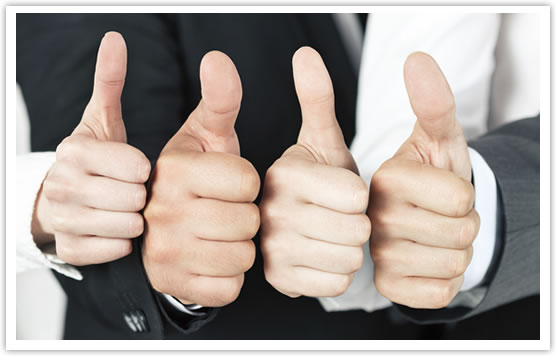
Results: Increase self-awareness, maximize employee engagement growth and retention, improved productivity, grow leadership confidence, invent innovation and creativity, build effective teamwork, create solid strategic relationships, improve cooperation, greater customer trust and retention.
TrustWorks®: Prevent and Close the Deficit of Trust
Phillip is a certified as Ken Blanchard Companies® TrustWorks® instructor. He served as a certification trainer to certify other facilitators to deliver this curriculum worldwide.
This program that builds trust within self, on teams and organization wide focusing on one of the core elements to success—workplace trust. This program is customized. It will emphasize self, teams and leader approaches.
TRUST WORKS! begins with a fable about a dog and cat who live together with other animals and the humans who care for them. But canine and feline do not trust each other—a situation that leads to fighting, backbiting, and sabotaging that soon affects the whole household. Unless their conflict is resolved, all the pets will lose their home.
Fortunately, a wise old parrot steps in to teach the dog and cat the ABCDs of trust. As each becomes aware of the unconscious behaviors at the root of their hostility, the dog and cat discover how to change their behavior—a mutual transformation that creates a happy, productive environment for all.
In Part II, you discover how to apply the ABCD Trust Model™ to your own life to resolve situations where conflict, low morale, miscommunication, and dysfunctional leadership undermine your effectiveness. TRUST WORKS! provides a common language for trust—and essential skills for building, repairing, and sustaining it.
At the heart of every interaction, trust plays a crucial role in shaping individual behavior and productivity. By providing specific tools and organizational development expertise, our consultants work with you and your staff to help establish and maintain trust in your organization. Outcomes will be the elimination of barriers to communication, improved productivity due to a positive work environment and commitment to achieving the desired results.
Myself As A Trust Builder®: This course enables participants to identify their trust-building skills, strengths and areas for improvement. Participants take an assessment with 28 questions based on the four Elements of trust.
Leader as Trust Builder®: Having strong, effective skills to build trust in the workplace is recognized as a valuable leadership asset. An assessment (Self or 360) with 36 questions is at the core of this workshop.
Great Teams®: In the TrustWorks! Great Teams workshop, a team quickly discovers what it is doing that contributes to or hinders its effectiveness. The guide explains how to lead the team through assessment, diagnosis and planning for improvement.
Assessment is included during class.
TeambuildingPhillip has enjoyed consulting and providing organizations from multiple industries highly … |
Multigenerational Marketplace and WorkplacePhillip has studied this topic before it hit the mainstream workplace. Today there are … |
Feedback and CoachingPhillip helps organizations review the inherent value of coaching and how it’s crucial role to … |
Teambuilding
Results: Foster creativity and innovation, blend complementary strengths, build trust, effective conflict resolution skills, greater sense of ownership, encourage healthy risk-taking, focus on strategic objectives. These translate into improved employee engagement, retention, performance and profitability.
Phillip has enjoyed consulting and providing organizations from multiple industries highly interactive teambuilding programs that lead to greater synergy, agility and productivity. Organizations he has supported with this program include the Georgia State Lottery, Pamela’s Products, Adlink, among others.
Ultimately, communication and patterns of communication can provide insights into the health of a team. Communications patterns matter. It seems almost absurd that how we communicate could be so much more important to success than what we communicate.
How we communicate matters. It is often the core of team dysfunction. Participants will be led through a series of highly interactive discovery activities. These are customized to your needs. Topics typically include: trust, empowerment, communication, decision-making, team spirit, cooperation, motivation. Phillip will typically leverage the Tuckman Team Development Model with a few updates, and the Five Dysfunctions of a Team.
You can expect to be able to build effective teams, recognize the different phases of team development and more effectively help new team members quickly become valuable team players.
Multi-generational Marketplace and Workplace
Results: Build cooperative and mutually satisfying working relationships, improved corporate culture, competitiveness, effective recruitment, employee engagement and morale, employee retention, improved team flexibility, better decisions, increased innovation and creativity, solid understanding of multigenerational marketplace.
Phillip has studied this topic before it hit the mainstream workplace. Today there are Traditionalists, Baby Boomers, Generation X, Millenials and now Generation Z in the marketplace and workplace at the same time. He has provided training to major brands and organizations on the subject including the US Department of Commerce and BMW.
Today, with five generations in the workplace at the same time, we are experiencing a gap in skills. The most recent Association for Talent Development (ATD) Skills Gap poll identified categories of skills most lacking. In first place were leadership and executive-level skills, reported as lacking by 50 percent of respondents. Following closely were basic skills at 46 percent, professional or industry-specific skills at 41 percent, and managerial and supervisory skills at 31 percent.
Modern consumers are also savvier today. Younger customers prioritize differently than a post depression era Baby Boomer. They have different expectations. How are you bridging the gap?
Phillip helps organizations understand the strengths across organizations. He also helps them identify innovative approaches over traditional approaches which will help organizations retail top talent. Each generation has certain tendencies based upon what they experienced up to the age if 18 years old. These often drive how they make decisions in the marketplace and the workplace.
People in this program will need courage, openness and commitment to thinking differently. He will be your guideline as you discover more about yourself and others within your organization so you can embrace the differences and leverage the strengths each generation offers.
Ultimately, Phillip helps participants recognize, understand, and appreciate the differences of the people they work with across generational boundaries. He will also help you prepare a strategy through a series of activities. He does this through a highly interactive approach that will help ensure application of the concepts on the job.
Feedback and Coaching
Results: Improve performance, communication skills, interpersonal skills, executive and leadership presence, communicating vision, team building and delegation, follow-through. These result in increased employee engagement, retention consistent performance, customer satisfaction and profitability.
Phillip helps organizations review the inherent value of coaching and how it’s crucial role to success and growth of people and the organization. His coaching programs are interactive, and participants will not fall to sleep in this program, everyone participates. READY?
Topics may include: define coaching, mentoring, counseling, the GROW coaching model and/or STAR feedback model.
During Phillip’s feedback and coaching programs participants will learn to recognize effective coaching behaviors. They will be able to define differences between coaching, mentoring, and counseling; and, learn when to coach, mentor and counsel. Phillip will emphasize the purpose of providing great feedback that is timely and the value of reinforcing good behavior as much as behavior for improvement.
Performance ManagementPhillip has helped organizations understand the value of performance management and helped … |
Communication SkillsPhillip enjoys being able to help provide a comprehensive understanding of the … |
Human Resources and Hiring Best PracticesPhillip will work with you to customize this program to meet your needs. It will leverage … |
Performance Management
Results: Improve employee performance, develop the individual and team skills needed to achieve organizational goals, provide employees the needed skills and knowledge to complete assigned jobs, duties and tasks; motivate employees to achieve higher standards, increase overall efficiency, improve customer service, decrease employee turnover, which reduces down time; enhance employee morale, motivation, and creativity; enable managers to reach their goals and objectives, give employees the tools needed to analyze interpersonal and situational factors that create obstacles to achieving high performance.
Phillip has helped organizations understand the value of performance management and helped enable them to implement similar approaches within their organization.
Topics he typically addresses include: goal setting, performance management, steps to effective performance discussions; model for career discussions.
Phillip seeks to help participants define the importance of a high performance organization, understand how to improve team performance by increasing communication around high performance, write effective work and performance objectives and conduct effective performance appraisal discussions that are supportive
Communication Skills
Results: Leverage ideal methods of communication that achieve the best results; learn how to communicate professionally using telephone and email; acquire techniques for connecting with people quickly and easily; build stronger relationships with internal and external customers, gain insight into your communication style and how this affects others; respond and adapt to others’ needs in a professional and timely manner; understand why sharing information and collaboration leads to success; obtain strategies for dealing with difficult situations. This results in improved employee engagement, productivity and profitability.
Phillip enjoys being able to help provide a comprehensive understanding of the foundational elements for effective communication. His philosophy is the sender is responsible to make sure the message is received. He uses deliberate techniques and models to help participants learn and apply concepts. This is a very engaging program with role plays, case studies and even Legos.
Topics can include: VAK, filters/barriers, active listening, cultural dynamics, Johari window, behavioral styles, generational differences, use of technology. Phillip’s programs will help you achieve results in communications with others, with simple, concise, and direct language. You will be able to build greater trust and solid relationships, avoid misunderstandings, eliminate filters and barriers that breakdown communication.
Human Resources and Hiring Best Practices
Results: Learn detailed staffing process, interviewing skills, learn critical, need-to-know legal information about hiring and termination, essentials of employee coaching, counseling and discipline, This results in reduced hiring costs, job fit, increased productivity, high performing teams, increased productivity and profitability.
Phillip will work with you to customize this program to meet your needs. It will leverage your specific personnel policies and procedures. Phillip is current on the latest in Human Resources best practices and holds a Masters degree in Human Resources Management.
Even learning policies and laws can be fun. Phillip has unique strategies that will provide an engaging and effective program.
Topics depend upon your needs and can include: behavioral interviewing, questions to ask/not to ask, evaluating the interviewee, compliance, etc.
These programs typically will help participants understand structure organizational chart and its relationship of roles. Phillip will explain essential policies, hiring policies, supervision, evaluation, conduct, and disciplinary procedures. And, can also address standards for acceptable and unacceptable behavior, as well as processes used to ensure the proper screening, training, and supervision of people.
Engaging, Motivating and Empowering PeoplePhillip’s high energy and engaging presence is contagious. It becomes a role model for … |
Facilitation, Training and Presentation SkillsPhillip helped outline the credentialing standards for the training profession. He prides himself … |
Stress Management and Well-BeingPhillip has delivered programs like this to a variety of organizations, including the Department of … |
Engaging, Motivating and Empowering People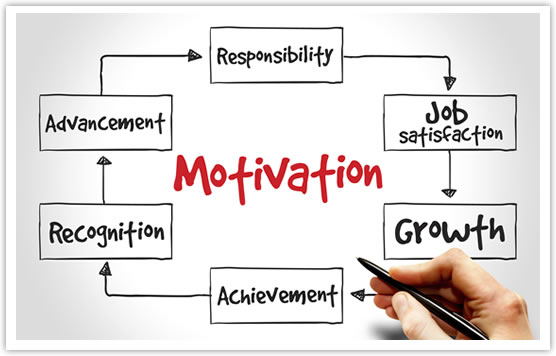
Results: Inspire people to action, increase high levels of performance, create an emotional connection, build relationships, improve creativity and innovation, blend build trust, reduce stress, improve focus and commitment on strategic objectives. These translate into improved employee engagement, retention, performance and profitability.
Phillip’s high energy and engaging presence is contagious. It becomes a role model for participants in this program. You will identify what motivates others and learn how to empower and engage your people which leads to a happier workplace and happier customers.
Programs may vary and are customized. This will typically introduce McClelland, Herzberg and other motivational theorists approaches, explain how the psychological contract impact performance, engage and motivate teams by building on individual strengths, identify and help you remove performance barriers, and effectively measure performance.
Phillip will address may typically include: empowerment, employee engagement, motivational strategies, measurement, values, strengths and talents, resources management, servant leadership, supporting new team members
Facilitation, Training and Presentation Skills
Results: Improve retention, understand audience needs, apply accelerated learning techniques, move people to action, improve the value of time in meetings and classroom, support strategic objectives, increase productivity, employee engagement, reduce stress, become more strategic, improve customer satisfaction, increase profitability, increase ROI of training and meeting time, ensure relevant message with a deliberate approach, get to the point quickly, support change acceptance.
Phillip helped outline the credentialing standards for the training profession. He prides himself on being on the cutting edge of adult learning and understanding how the brain works. He has spoken to over 1000 audiences, earned his Certified Professional in Learning and Performance (CPLP) and Certified Toastmaster (CTM) with Toastmasters. Training and speaking to audiences is Phillip’s passion.
Speaking in public is among the top 5 most common fears. In fact, it ranks as the number one fear. People fear death less than speaking in public. Phillip’s approach provides a safe space.
He not only is a skilled and seasoned facilitator, he is also an accomplished instructional designer. You can expect very deliberate approaches to helping you get your message across and ensuring people get it!
This is a program that can be customized. Topics can typically include: what is the difference between facilitating vs. presenting, audience analysis, getting to the WIIFM, clear objectives, organizing your message, logistics and preparation
Stress Management and Well-Being
Results: Shift participants from distressed to de-stressed which results in improved self and social awareness, improved ability to motivate others, improved leadership ability, support timely deliverables, solid communication process, reduces possibility of workplace conflicts, improved your ability to develop teamwork, team building, team performance and productivity, culture of positivity, less illness and absence, reduced safety risks and increased profitability.
Phillip has delivered programs like this to a variety of organizations, including the Department of Treasury’s Collections Team. These programs help participants dig deep. He takes participants on a journey of self-discovery to understand the origins of stress. Ultimately the shift is to viewing stress in a positive way that becomes empowering.
According to the American Institute of Stress:
- 40% of workers reported their job was very or extremely stressful.
- 25% view their jobs as the number one stressor in their lives.
- Three fourths of employees believe that workers have more on-the-job stress than a generation ago.
- 29% of workers felt quite a bit or extremely stressed at work.
- 26 percent of workers said they were “often or very often burned out or stressed by their work.”
- Job stress is more strongly associated with health complaints than financial or family problems.
Phillip will help you understand the origins of your stress and provide you with practical options for reducing stress in your life and improving your health and emotional well being.
Solutions begin first with self-awareness. Others can include aromatherapy, nutrition, massage, journaling, etc. Take control of your career and become a reliable and valuable contributor to your team that makes a powerful difference.
Leveraging Team Strengths: StrengthsFinder 2.0Phillip has facilitated this program to multiple organizations. He also applies the principles in … |
Time ManagementPhillip will help you prioritize, select and implement the appropriate time management … |
Leveraging Team Strengths: StrengthsFinder 2.0
Results: Use of this evidence based approach will lead to improved self and social awareness, reduced stress, build performance, increase employee engagement and empowerment, stronger relationships. This translates into improved performance, retention and profitability.
Phillip has facilitated this program to multiple organizations. He also applies the principles in all facets of his consulting and coaching. The concepts in this program have been thoroughly researched and proven. The program is always customized for relevance and is highly interactive.
Do not expect to be in your seats long! Participants will use the concepts in class through a series of methodical and deliberate activities to ensure greater application outside of class.
Phillip helps participants recognize their talents and talents of others on their team, build strengths, and ultimately improve synergy and agility. You will shift your perspective and learn to focus on what your people (and you) do well instead of what they don’t, create new habits and minimize stress while consistently producing better results. He will help you use StrengthsFinder 2.0® to approach projects with a deliberate approach that results in consistent near perfect performance.
Prerequisite: Participants will need to purchase their copy of StrengthsFinder 2.0. Then, complete the survey online using the unique code from the book.
Time Management
Results: Ability to become spontaneous, hit timelines on schedule, accomplish more, reduce stress, minimize procrastination, achieve goals, increase productivity, remain focused on tasks, accomplish more in less time, shift views and perspectives related to time.
Phillip will help you prioritize, select and implement the appropriate time management tools/systems with a proactive and focused attitude in both your work and personal life.
You will develop a new relationship with time and unlock mental models that will empower you to become more effective so time does not control you. Phillip will typically introduce some simple and easily repeatable process of time planning and management which you can apply immediately.
This program will be customized to address your major considerations and support your strategic objectives. Topics he will address may typically include to-do lists, delegation, prioritization, interruptions, scheduling, and resource management.
![]()
Employee Engagement
PERFORMANCE IMPROVEMENT PACKAGES
| An employee engagement strategy helps ensure that employees are committed to their organization’s goals and values, motivated to contribute to organizational success, and are able at the same time to enhance their own sense of well-being. Phillip’s learning and strategic planning programs are deliberately designed and delivered to support employee engagement.
Currently, 13% of employees across 142 countries worldwide are engaged in their jobs — that is, they are emotionally invested in and focused on creating value for their organizations every day. As in Gallup’s 2009-2010 global study of employee engagement, actively disengaged workers — i.e., those who are negative and potentially hostile to their organizations — continue to outnumber engaged employees at a rate of nearly 2-1. Employee engagement will become an increasingly important concern for countries and organizations seeking to boost labor productivity as the global economy continues its rapid pace of change. Many leaders will tell you their organization’s greatest asset is its people —this is only true when those employees are fully engaged in their jobs. You probably would agree, engaged workers stand apart from their not so engaged and actively disengaged co-workers because of the discretionary effort they consistently bring to their roles day after day. These employees willingly go the extra mile because of their strong emotional connection to their organization. Reaching this unique state goes beyond having a merely satisfactory experience at work to one of 100% psychological commitment. Any employee can achieve this state in an engaging workplace, but leaders can be sure they are creating and maintaining this type of environment only if they actively measure and manage the true drivers of engagement. |
 |
Gallup: Employee Engagement Categories
The Solution: Phillip will provide you support as you discover your opportunities for greater employee engagement. There are some steps you will take as you commit to move the needle.
|
Many solutions are available. Specific programs will have a direct impact in your organizations’ employee engagement with swift results. Three proven ways organizations can boost engagement levels include:
- Select the right people
- Develop employees’ strengths
- Enhance employees’ well-being
![]()
Other common topics include:
- Leadership Essentials
- Project Management
- Inclusion and Diversity Awareness
- Conflict Resolution

